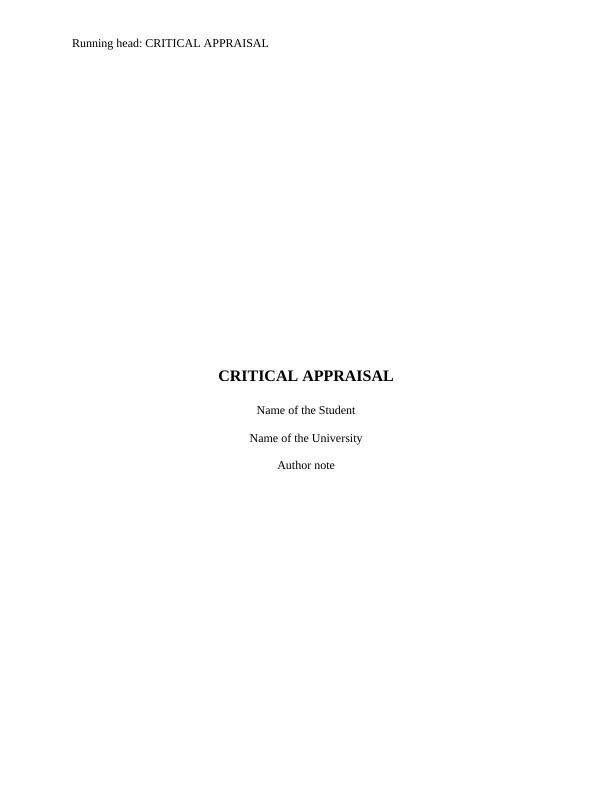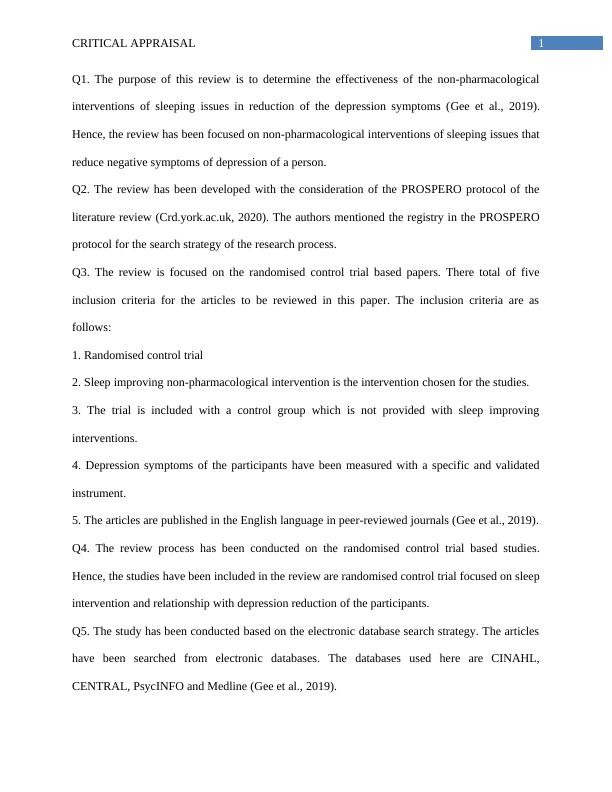What is Critical Appraisal?
Examining the effect of non-pharmacological sleep interventions on depression symptoms through a meta-analysis of randomised controlled trials.
8 Pages2005 Words15 Views
Added on 2022-08-13
What is Critical Appraisal?
Examining the effect of non-pharmacological sleep interventions on depression symptoms through a meta-analysis of randomised controlled trials.
Added on 2022-08-13
ShareRelated Documents
End of preview
Want to access all the pages? Upload your documents or become a member.
Critical Appraisal Literature Review
|12
|2195
|16
Critical Appraisal Literature Review | Doc
|9
|1740
|26
Critical Analysis Assesment Report
|9
|1987
|25
Assessment 1 Critical Appraisal Literature Review
|9
|2812
|432
Comparison of Pharmacological and Non-Pharmacological Interventions for Schizophrenia Treatment
|6
|861
|189
Effective Interventions for Preventing and Reducing Delirium in Acute Hospital Setting
|11
|2346
|388



